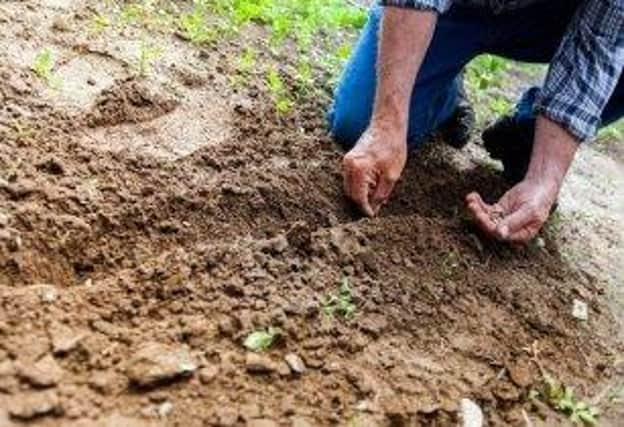The answer to impact of arable farming lies in the soil


Accusing ploughing and the use of fertilisers and sprays of creating the sort of chaos in the microbial world which encourages a “gangsters paradise” - where the bad guys come out on top - the findings were drawn from research on a unique 50-year field experiment at Rothamstead Research institute.
Mycorrhizal fungi, including those that form mutually beneficial associations with plants and play important roles in plant nutrition, were reduced in favour of pathogenic fungi that survive by attacking insects, plants and lichen, according to the study’s lead researcher, Professor Andy Neal.
Advertisement
Hide AdAdvertisement
Hide AdThe research also found the more ‘nutritionally monotonous’ arable soil environment led many bacteria to ‘reduce their running costs’ by jettisoning more than 600 of the genes usually needed when faced with the diverse range of food sources found in grasslands or pastures.
“Farming practices cause physical disruption and alter the nutritional inputs, which means less diverse plant materials and more readily available nitrogen to soil.
"As a result, some species lose out allowing new ones – often with very different ways of making a living - to thrive. Even those that survive have had to change the way they live their lives,” he said.
Commenting on the research which looked at the effect of converting grassland to either arable or bare soil, he said that while the richness of species didn’t change very much, new species moved in which often filled different ecological roles.
According to Neal this change in the natural balance meant that typical measures of soil biodiversity weren’t adequately explaining what was going on in soil - as farming not only changed the number and relatedness of the species present, but also the genetic complement of the community as a whole.
Using soil samples from the long running Highfield-Ley experiment, the team from Rothamsted Research, working with the US Department of Energy’s Pacific Northwest National Laboratory, compared arable soils with their original grassland state, as well as bare soils which had been left fallow for over 50 years.
The researchers also saw a greater variety of bacteria in arable soil, while the total number of species of archaea - a group of single cell organisms, members of which generate the greenhouse gas nitrous oxide as a by-product of ammonia oxidation – also increased in response to fertilisation.
And Neal said that the results also show that the responses of these three different types of organisms varied markedly depending on the physical and chemical practices adopted by farmers managing the land.
Advertisement
Hide AdAdvertisement
Hide Ad“As elsewhere, biodiversity loss in soil was of great concern,” said Neal, “We rely on soil to grow almost all of our food, but perhaps surprisingly we know little about how the way we manage soils affects the microbial communities which support soil fertility, provide clean water and regulate greenhouse gas emissions.”
Comments
Want to join the conversation? Please or to comment on this article.